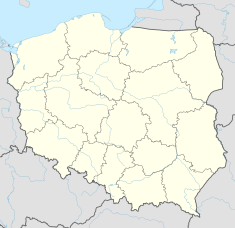Sejm and Senate Complex of Poland
| Sejm and Senate Complex of Poland |
|
|---|---|
|
Native name Polish: Kompleks budynków Sejmu Rzeczypospolitej Polskiej |
|

View from Piotr Maszyński Street
|
|
| Location | Warsaw, Poland |
| Coordinates | 52°13′31″N 21°01′42″E / 52.22528°N 21.02833°ECoordinates: 52°13′31″N 21°01′42″E / 52.22528°N 21.02833°E |
| Built | 1928 |
| Architect | Kazimierz Skórewicz, Bohdan Pniewski |
| Architectural style(s) |
Neoclassicist, Modernist |
Sejm and Senate Complex of Poland (Polish: Kompleks budynków Sejmu Rzeczypospolitej Polskiej) - a complex of buildings located in Warsaw, housing the Sejm and Senate of Poland.
The construction of the complex began after Poland regained its independence in 1918. The expansion of the complex continues to the modern-day, with a new building under construction since 2014. All of the buildings part of the complex are managed by the Chancellery of Sejm.
The building was constructed during the most expansive reconstructions of the Sejm, between 1949 and 1952. It consists of two-storey parts, connected by underground tunnels. The road heading to the main entrance is found below the building. Since 2016, on the wall opposite the main entrance, lay wall reliefs designed by Józef Gosławski from the 1950s.
Main entrance
Details carved into white sandstone
Main building
The Main Hall is found by the main entrance of the Sejm. Its three-tone, white-gray-black floor was made of marble, the hall is characterized by gray stucco columns and portals made from of white Carrara marble. In the hall there are marble stairs with a decorative iron balustrades, with golden bas-reliefs of girls and boys, while the brass rail of the balustrade has been made ito the shape of a snake. On both sides of the stairs there are two commemorative plaques commemorating the visit of Saint Pope John Paul II on June 11, 1999.
To the right of the main entrance there is a model of the Sejm complex, above which there are found commemorative plaques: a tribute to the ministers of the Second Republic of Poland killed during the Second World War and a commemorative plaque commemorating those killed in 2010 in the Tu-154 catastrophe near Smolensk. Above the entrance is a ceramic clock made in 1955 by Władysław Zych.
...
Wikipedia

